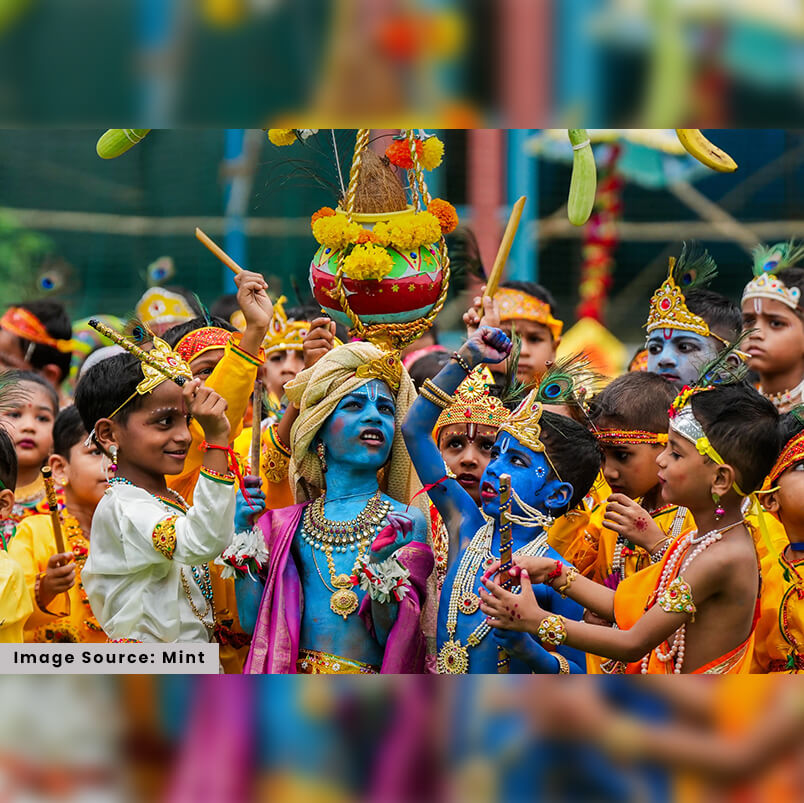Janmashtami, the vibrant celebration of Lord Krishna's birth, is a festival that holds a special place in the hearts of millions. It is a time filled with devotion, joy, and cultural traditions. While the significance of Janmashtami is profound, it also offers a wonderful opportunity to engage children in meaningful and fun activities that help them connect with their cultural heritage. Introducing young minds to the stories and activities associated with Janmashtami can make the festival an enriching experience for them.
The Life of Little KrishnaOne of the most delightful ways to introduce children to the essence of Janmashtami is through storytelling. Lord Krishna’s childhood tales are filled with adventure, mischief, and moral lessons, making them perfect for captivating young audiences. Narrating stories like the playful stealing of butter (Maakhan Chor), Krishna’s victory over the serpent Kaliya, or the lifting of Govardhan Hill not only entertain children but also teach them important values such as kindness, courage, and devotion.
Parents and teachers can bring these stories to life through simple props or puppets, creating a visual experience that enhances the storytelling. Interactive storytelling sessions where children are encouraged to ask questions or even act out parts of the story can further deepen their understanding and engagement.
Crafts and Creative ActivitiesJanmashtami is also an excellent occasion to involve children in creative activities that are both educational and enjoyable. Crafting a simple Dahi Handi (a clay pot symbolising the butter pot that Krishna loved) using paper mache or decorating it with colourful paints and embellishments can be a fun project. Children can also create their own little Krishna crowns (mukut) using craft paper, sequins, and feathers, encouraging them to get involved in the festive preparations.
Making and decorating clay idols of baby Krishna, or even creating miniature versions of Vrindavan using recycled materials, can help children learn more about Krishna’s life and surroundings in an engaging and hands-on manner.

Music and Dance
Music and dance are integral parts of Janmashtami celebrations, and involving children in these activities can make the festival even more joyous for them. Teaching children to sing simple bhajans (devotional songs) dedicated to Lord Krishna, or encouraging them to participate in a Raas Leela dance (a traditional dance form depicting the divine love story of Krishna and Radha) can instil a sense of devotion and rhythm in their celebration.
Children can also be introduced to traditional instruments like the flute, synonymous with Lord Krishna. Simple flute-playing sessions can be both fun and educational, helping children appreciate the musical heritage associated with the festival.
Learning through PlayIncorporating play into Janmashtami celebrations is another effective way to engage children. Organising games such as “Find the Butter” or “Krishna’s Treasure Hunt” can turn the festival into an exciting adventure. These games entertain and teach children about teamwork, problem-solving, and the importance of sharing, reflecting the values embodied by Lord Krishna.
ConclusionJanmashtami offers a treasure trove of stories, traditions, and activities that can enrich a child’s understanding of their cultural roots. By engaging young minds through storytelling, crafts, music, and play, we can make the festival an unforgettable experience that instils values, fosters creativity, and deepens their connection with Lord Krishna’s legacy. Celebrating Janmashtami with children in this way not only keeps traditions alive but also ensures that the joy and teachings of this auspicious occasion are passed down to the next generation in a meaningful and enjoyable manner.
